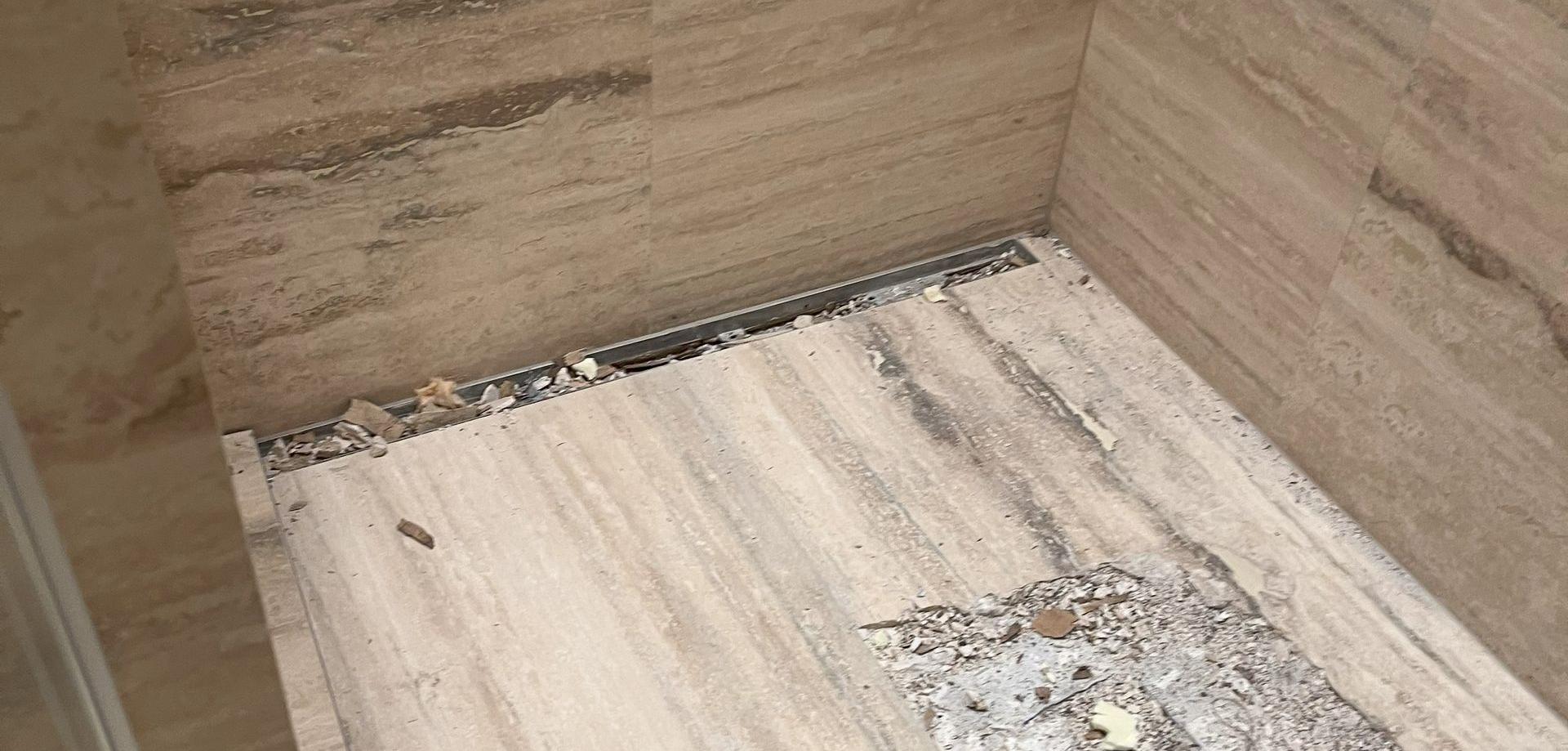Getting your flooring installed is not just about tiling anywhere, it is so important you get the substrate right!
There are various different issues with different substrates, from tiling over wooden flooring to correcting the levels using a screed.

In this article we are focusing on anhydrite screeds.
When you correct the levels, using a screed you may be in a hurry and want to get the flooring installed as soon as possible. However this can cause lasting damage, so you can not rush this stage. Getting your flooring installed on the correct substrate will ensure you don't get costly implications further along the project.
If the screed is not dry enough and tiles are laid on top, moisture becomes trapped in between the screed, with which the moisture comes to the surface. The screed is made of Gypsum, so the moisture rots the screed and the tiles all come loose. Initially the grout will become discoloured, then the tiles pop off. There for it is very important to ensure the moisture content is checked prior to laying, and there should be no more than 0.5% water by weight before tiling can commence.
During our Keystone years, we have been present on more than one project where the whole floor in a manor house had to be lifted and replaced since drying times weren’t adhered to.
The important rule: average drying times are 1mm/ day for the first 40mm increasing to half a mm/day where it’s thicker. For example, for 100mm thick screed this would be 160 days.
The important rule:
The average drying times are 1mm/ day for
the first 40mm increasing to half a mm/day where it’s thicker. For example for 100mm
thick screed this would be 160 days.
Another failure we have witnessed has been where the prep work on an Anhydrite screed hasn’t been done.
The cementitious adhesives used on an anhydrite screed result in a chemical reaction which causes the two elements to de-bond. It is essential that the screed is first linished to grind off all the laitance, then two coats of primer, the first one mixed 50/50 with water, the second one needs to be neat. This separates the cement from the gypsum. If this method is not done, it is almost inevitable for the tiles to all lift. The same prep work apply.
Preparing the screed:
It is essential that the screed is first linished to grind off all
the laitance, then two coats of primer, the first one mixed 50/50 with water,
the second one needs to be neat. This separates the cement from the gypsum. If
this method is not done, it is almost inevitable for the tiles to all lift.
Thank you for reading this article....creating your perfect flooring solution is what matters to us at Keystone. Get in touch with your challenge and with our many years of experience will have the solution for you.
No.2 Tips and Advice - Working with Anhydrite Screeds